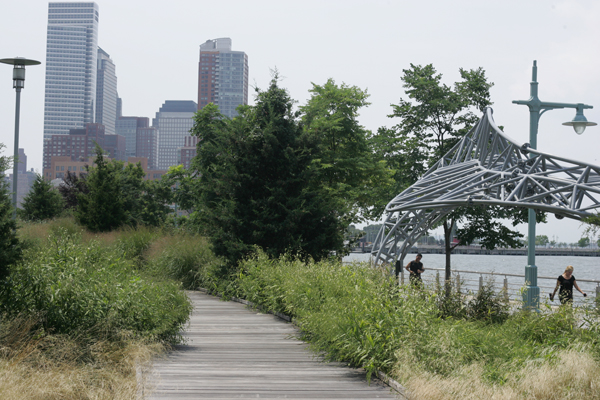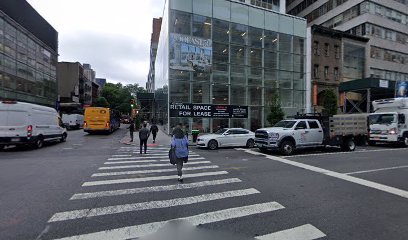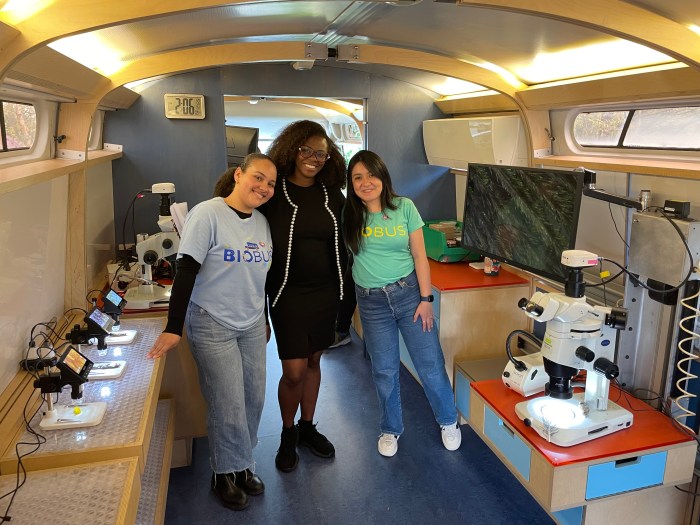
BY HELAINA N. HOVITZ | A plan to beautify the Lower West Side’s Hudson River Park is in the works following a host of safety concerns shared by nearby residents.
A recent survey conducted by the Friends of Hudson River Park (F.O.H.R.P.), the designated fundraising partner of the Hudson River Park Trust, found issues with access to the park and its connectivity to the surrounding streetscape — highlighting, in particular, that the West Side Highway has become an impediment to the park and its intersections.
In response, F.O.H.R.P. executive director A.J. Pietrantone said the organization would be working with the city Department of Transportation on overall safety issues, including the timing of traffic lights and the improvement of nearby crosswalks.
This discussion, which took place at Community Board 1’s Tribeca and Waterfront Committees on Wed., July 11, was part of a larger proposal put forth by F.O.H.R.P. to sustain and improve the 550-acre park through the medium of a Neighborhood Improvement District (N.I.D.) — the first of its kind in New York City.
The N.I.D. would provide a stable, long-term funding source for the park and aim to strengthen the relationship between the park and local neighborhoods, Pietrantone said. It would be governed by a board of property owners and residents and serve as a public-private partnership guided by a community plan and approved by the city.
The proposed plan comes on the heels of Hudson River Park Trust’s proposition in June to amend the 1998 Hudson River Park Act so that it would allow both residential and hotel development and offer longer lease terms to commercial tenants.
Since F.O.H.R.P. is not eligible for city or state funding, the costs would have to be covered by local residents and businesses, various organizations and other private sources. Currently, most of the park’s funding comes from its commercial piers and private donors.
The plan, in other words, would involve assessing neighborhood properties based on their square footage.
“It’s for their benefit,” he said. “The surrounding property values are enhanced by the well-maintained park, so it’s necessary in order to maintain that balance.”
The N.I.D. would cost residents 7.5 cents per square foot, so a 1,200-square-foot home would cost a projected $92 a year, and a building comprised of 24 apartment units would likely contribute a total of $2,395 annually.
“It’s a reasonable rate — we’re getting bang for our buck,” said Bob Townley, C.B. 1’s Waterfront Committee chair, of the proposal.
Because the park is built next to the water, it deteriorates faster than inland parks such as Central Park and is therefore in need of more frequent upkeep, according to F.O.H.R.P. The park has been growing in size, but the funding remains the same, Pietrantone noted.
The Hudson River Park Act, which dates back to 1998, encourages but doesn’t mandate that the park be self-sustaining. Currently, the park receives no city or state funds for operations and maintenance.
Of the $10 million expected to be raised by the N.I.D. each year, a minimum of $6 million will go toward upkeep of the park. The balance will finance maintenance of the West Street median and the bike path along with other improvements for enhanced safety and park access — the details of which Pietrantone said would be worked out later on.
Funds raised for the project would not be devoted to materials, salaries or other contracts, according to Pietrantone.
The F.O.H.R.P., which has embarked on an aggressive fundraising initiative, is expecting a total of about $4.4 million in contributions from corporations, individuals and foundations.
Recently added to the F.O.H.R.P. board to raise the park funds is Mayor Mike Bloomberg’s girlfriend, Diana Taylor, and Australian actress Deborra-Lee Furness, wife of actor Hugh Jackman. Blake Beatty also joined the group as director of development, having spent the past five years fundraising for the National Sept. 11 Memorial.
The plan’s proposed improvements for the park are also meant to support local business owners, according to the F.O.H.R.P. Though specific programs have yet to be decided on, preliminary ideas have already been tossed around — namely discount programs and special events that would attract park-goers to area retail and food service establishments.
While F.O.H.R.P.’s main purpose is fundraising, the Hudson River Park Trust runs the park. In a phone interview, N.Y.S. Assembly Member Deborah Glick said that, while she advocates fundraising to maintain the park, she’s concerned about where the Trust is going to go with the plan it presented back in June.
Glick reiterated her disapproval of major development in the park, such as residential high-rises, hotels and office towers. Building on the piers, she said, is an environmentally bad idea — particularly since Manhattan’s entire Lower West Side coast falls in Zone A for flood evacuation.
“I think this would change the nature of what a park is,” she said. “We are the most park-starved neighborhood in the city, and we deserve a park.”
She believes that people who live in affordable housing should only have to pay a small annual fee, rather than a monthly fee, toward the park.
“For some people, especially elderly people who have no way of having additional resources,” she said, “there might need to be a hardship clause.”
The proposal will require City Council approval. But first, F.O.H.R.P. will return to C.B. 1 in the fall to solicit a resolution that favors the proposal. The F.O.H.R.P. has gone before C.B.s 2, 3 and 4 as well.
The group describes itself as an independent, nonprofit organization dedicated to the completion and enhancement of Hudson River Park. Founded in 1999, F.O.H.R.P. has also been the principal advocacy group working to garner public dollars for Hudson River Park and monitoring its progress under the Hudson River Park Act.
F.O.H.R.P.’s advocacy has already helped to secure more than $250 million in public funding to construct the park. It is estimated that the park will always need about $11 million per year to operate.

















